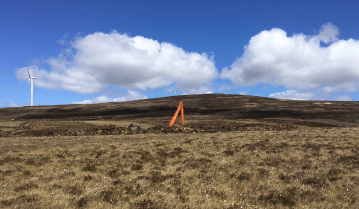Update on the Industrial Emissions Directive
3rd February 2013
In November 2005, the European Commission launched a review of European legislation on industrial emissions in order to improve environmental benefits, remove ambiguities, promote cost-effectiveness and to encourage technological innovation. The general objective of the review was `to evaluate the scope to improve the functioning of the Directive and its interaction with other legislation, in particular related to industrial emissions, while not altering the main underlying principles and the level of ambition set in the Directive’.
Source: Defra website
In order to strengthen existing legislation and assist reduce emissions from industrial manufacturing installations within the member states, the European Commission review introduced a new directive, Directive 2010/75/EU on Industrial Emissions, designed to coalesce seven pieces of existing legislation as listed below into the Directive on Industrial Emissions (IED):
- The Large Combustion Plant directive;
- The Integrated Pollution Prevention and Control (IPPC) directive;
- The Waste Incineration directive;
- The Solvent Emissions directive; and
- The three existing directives on Titanium dioxide including:
- (i) disposal (78/176/EEC);
- (ii) monitoring and surveillance ( 82/883/EEC); and
- (iii) programs for the reduction of pollution (92/112/EEC).
In summary, the IED is designed to primarily be the successor to the IPPC Directive and in essence, has the principal aim of achieving increased environmental and human health benefits by reducing ‘harmful’ industrial emissions across the EU, in particular through better application of Best Available Technique (BAT).
Certain provisions of the directive follow the implementation dates below:
- Transposition into U.K. law by 06 January 2013;
- Implementation from 06 January 2013 in respect of any new installation after that date;
- Implementation by 06 January 2014 in respect of installations already in existence before 06 January 2013 (except large combustion plants);
- Implementation by 06 July 2015 in respect of industrial activities not subject to the current integrated pollution prevention and control Directive; and
- Implementation from 01 January 2016 in respect of large combustion plants already in existence before 06 January 2013.
What does this mean for your organisation?
Based on an initial review of the IED, Mabbett expect that Operators of industrial manufacturing installations, as defined under Annex I of the IED, will be required to hold an integrated permit from the relevant authorities, similar to those issued under IPPC. However, the directive will cover additional activities not currently regulated under existing legislation and so the number of installations requiring to comply will likely rise which could impact facilities currently exempt from permitting under the existing legislation.
In summary, the IED will mean:
- Stronger, more consistent application of BAT, including full public reporting and justification of any departures from the BAT criteria set out in the relevant Sector Guidance;
- New BAT conclusions and the reference to sites delivering ‘BAT Associated Emission Levels‘;
- The requirements for site contamination condition reporting, including more explicit needs for quantified site baseline condition data and a committed monitoring programme;
- Changes in the management of emissions from large combustion plants including new emission limit values and a new ‘transitional national plan‘;
- New prescribed activities in the waste sector where the IED will extend to include activities such as composting, anaerobic digestion, some MRFs and waste water treatment activities amongst others; and
- Changes in the regulation of existing permitted activities including combustion, incineration, timber treatment and some food and drink processes.
(This information has been taken from a number of guidance websites to include DEFRA)
How can Mabbett assist?
Mabbett can assist determine how the IED will impact you, from identifying facilities that now fall under the reporting threshold, to supporting the transition from the existing legislation and assisting your organisation achieve and maintain compliance.
Contact Neil Sullivan, Senior Environmental Engineer and Project Manager, via email at: sullivan@mabbett.eu to discuss further.








 Previous
Previous 

